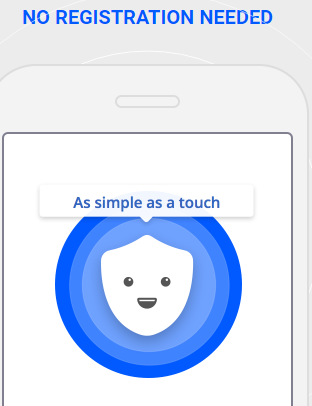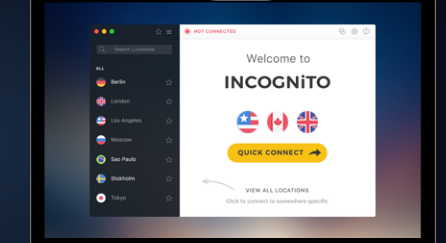The term Cloud Computing has been everywhere. You might have been wondering what is exactly is meant by the word Cloud computing. Let us make an attempt at understanding the concept behind the technology.
What is Cloud Computing?

Explained in simple words, Cloud Computing would mean storing your content over the internet instead of having it on your physical drive. The term Cloud is used as a synonym for the Internet. Please remember that the tasks you would perform with your local network will not be treated as cloud computing.
For anything to be called cloud computing, you need to access your files, programs, and other data over the internet. The least requirement would be to get some of your data synced with some service over the web.
How does it differ from the Physical computing?
When you store data on a local machine, everything you do is physically close to you. That would be helpful in accessing your data in a faster and easier way. In fact, that is the way how the computer industry has been working for decades now.
Â
Key features of cloud computing
Cloud computing lets you have access to different capabilities to store and distribute the data on third party servers. For the larger enterprises, it would mean reduced costs. You would not need to spend fortunes on setting up the servers.
The specific features of the service can be explained as below.
- Cost Reduction – The cloud computing will do away the need to set up the personalised servers. The charges would be usage based. That would make cloud computing a better choice for the enterprises in reducing operating costs.
- Maintenance – You would not need to install the software on each of the machines. It can accessed anywhere and as such would be location independent.
- Increased productivity – The cloud computing improves your productivity. Same data can be accessed by multiple users at the same time. Users will not need to install any software on their device and can work simultaneously.
- Enhanced security – Centralised data improves the security of your data. The cloud based servers ensure better security resources.
Â
Examples of Cloud Services
Microsoft has been a part of the Cloud based services since long. Cloud service have been a part of our almost everything we do on our smartphones. Microsoft provides you a set of web-based apps that work on the cloud. Office Online is one such example. Office Online is an internet – the only edition of Word, Excel, Powerpoint, and OneNote. It can be accessed via your browser without the need to install any other software.
Some other good cloud services are
–

- Google Drive – This is one of the most popular cloud services ever available. It can be termed as a complete cloud service as everything on it is stored over the internet. It can work seamlessly with other cloud apps. The service can be accessed on multiple platforms and devices.
- Amazon Cloud Drive – Amazon Drive is mainly concerned with the music and images. If you have access to Amazon Prime, you can have an unlimited access to image downloads. The Amazon Drive can save anything you buy from Kindle. Amazon Cloud is integrated into everything that is digital that has the presence on Amazon.
- Apple iCloud – Apple iCloud service can be primarily used for backing up and synchronizing your contacts, calendar, mail and other details. The service is available on iOS, Mac OS, and Windows. If you are a Windows user, you will need to install iCloud Control Panel. The service lets you access. Apple also lets your cloud-based versions for the Word processor, spreadsheets and presentations.
There are other services which claim to be cloud services like Dropbox and SugarSync. However, these services are named as Hybrid Services. That is because they store the synced version of the data over the Internet, while at the same time sync the online data with your local storage. In fact, Synchronization is an integral part of Cloud Computing process.
Models of Cloud Computing
There are basically three models of Cloud Computing developed. The classification depends on the users who are authorized to access the data on the cloud. The models involved are –
- Community Cloud – Community Cloud shares the information with a select list of communities and forums that have a common interest. They can be managed by a third party software or internally. The associated costs are spread over total users.
- Public Cloud – The user base in this model is quite wide. You can access various resources such as software, applications etc. It improves the productivity of your employees as they would be able to access the data even when they are out of the office.
It can be treated as the most inexpensive form of cloud computing model. The service tends to be highly reliable. The public cloud does not suffer geographical boundaries and is available for a wide range of user base.
- Private Cloud – This model of cloud computing is used for sharing sensitive information between a closed group. The model needs to be highly secure to avoid leakage of the information into the unauthorized hands.
Arguments against the Cloud Computing
Though Cloud computing has assumed a place of prime importance, there are some arguments against it.
One of the major consideration is the cost. It goes without saying that the cost of accessing the data over the Internet is pretty much in comparison to the costs involved in the local storage. Even the speed is the matter of concern. With the data being handled locally, you have the speed at your side as everything you need is just with you.
Then there are possibilities of crashes. If the servers of a provider who provides service to a multitude of services crashes, it will take out all your benefits. We have seen it happening with Dropbox, Gmail, Basecamp, Adobe, Evernote, iCloud, and Microsoft in 2014. The year 2015 saw it happening with Apple, Verizon, Microsoft, AOL, Level 3, and Google.
There are privacy issues involved as well. Your data is over the internet. Okay, you trust the service provider, but who actually owns your data? That may be a larger concern in later years as the cloud services are on the rise.
Finally…
Well, Cloud Computing is meant to save time and the efforts for you. Just like what the Internet is, even the Cloud computing has its own pros and cons. Nothing is predefined here as the rules and guidelines keep changing as you keep using it. So, ride the wave and hope for the best.
I hope you like the article and if NO Â then checks out this article which is much better to get lot more information of Tech world
Image Credit



Leave a Reply